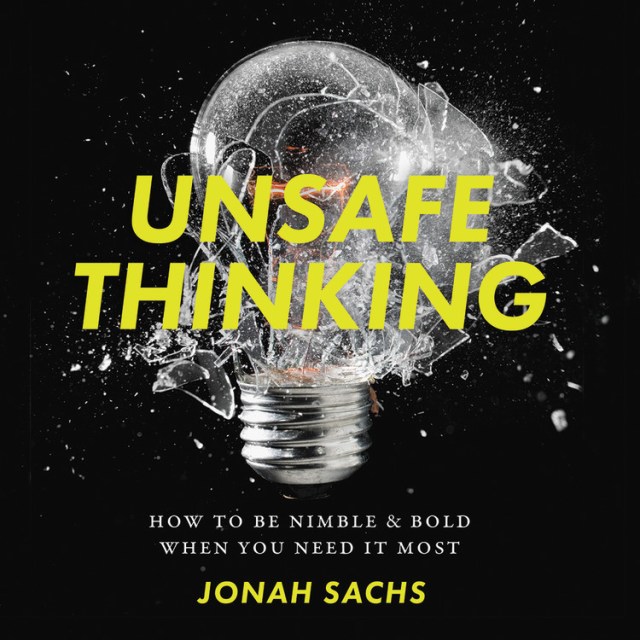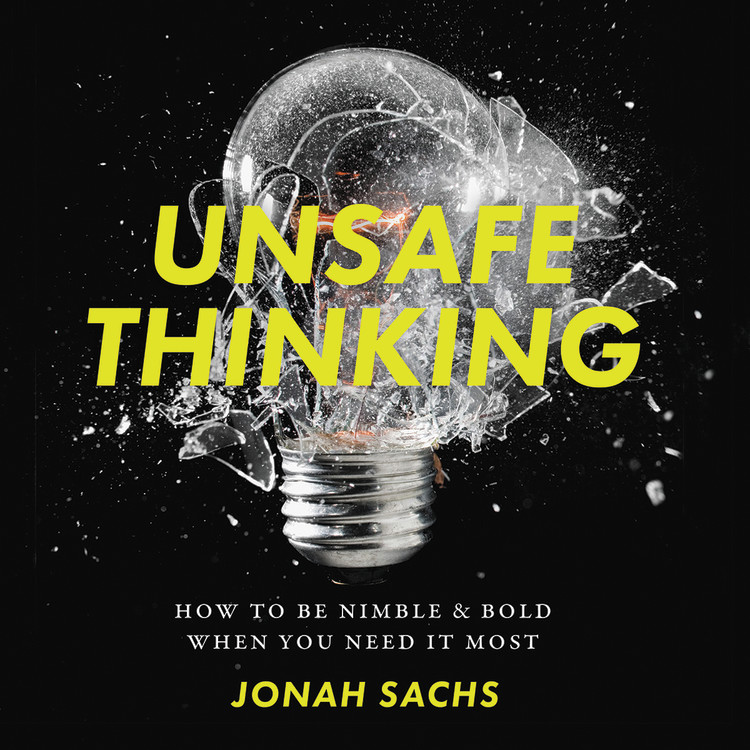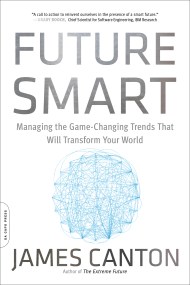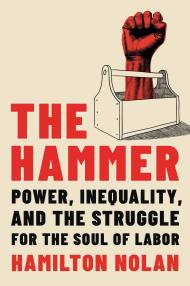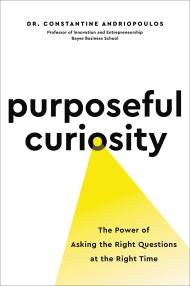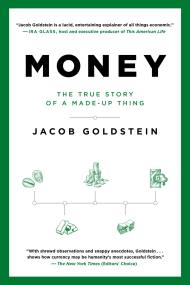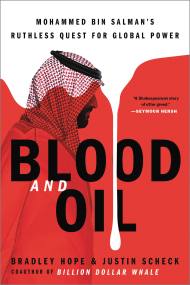Promotion
Use code MOM24 for 20% off site wide + free shipping over $45
Unsafe Thinking
How to be Nimble and Bold When You Need It Most
Contributors
By Jonah Sachs
Read by Jonah Sachs
Formats and Prices
Format
Format:
- Audiobook Download (Unabridged)
- ebook $17.99 $22.99 CAD
- Hardcover $36.00 $46.00 CAD
This item is a preorder. Your payment method will be charged immediately, and the product is expected to ship on or around April 24, 2018. This date is subject to change due to shipping delays beyond our control.
Also available from:
“Unsafe Thinking delivers an array of fresh insights on creativity, motivation, and staying in ‘flow.’ Packed with powerful case studies, it will propel you out of your rut and onto a path of better, sharper thinking.” — Daniel H. Pink, author of When and To Sell Is Human
How can you challenge and change yourself when you need it most? We’re creatures of habit, programmed by evolution to favor the safe and familiar, especially when the stakes are high. This bias no longer serves us in a world of constant change. In fact, today, safe thinking has become extremely dangerous.
Through stories of trailblazers in business, health, education and activism, and leveraging decades of research into creativity and performance, Jonah Sachs reveals a path to higher performance and creativity for anyone ready to step out of their comfort zone. He introduces troublemakers willing to challenge corporate culture like the executive who convinced CVS to drop its multibillion-dollar tobacco business. She now leads the pharmacy giant. Readers will get firsthand accounts of breaking from the status quo from a Nobel prize winning doctor who nearly got himself thrown out medicine, a two-time NBA championship coach who brought joy back to his team by tuning down the focus on competition, a CEO who rebuilt her reputation and life from the ashes from one of the biggest flops in internet history and a Colombian mayor who started an incredibly successful career of political reform by mooning an angry crowd.
Unsafe Thinking is full of counter-intuitive insights that will challenge you to rethink how you work. You’ll learn:
- Why your area of deep expertise is often where you’ll find your biggest blind spots
- Why anxiety can be fuel for creativity
- When to trust intuition and when to challenge it
- How collaborating only with those that share your values stunts your creativity
- How to build an organization that embraces intelligent risk.
Genre:
-
"An enchanting book about how to question the conventional, challenge the status quo, and unlock the creative solutions right under your nose."Adam Grant, New York Times bestselling author of Originals, Give and Take, and Option B with Sheryl Sandberg
-
"Unsafe Thinking delivers an array of fresh insights on creativity, motivation, and staying in 'flow.' Packed with powerful case studies, it will propel you out of your rut and onto a path of better, sharper thinking."Daniel H. Pink, author of When and To Sell Is Human
-
"A deeply insightful book for creators that only a creator could write."Peter Sims, founder & CEO, Parliament, Inc., author of Little Bets
-
A practical and truly entertaining roadmap to becoming more creative and productive. A must-read for anyone facing a changing world."Jonah Berger, Wharton Professor, author of Contagions
-
"A blazingly original book. In crisp, breezy prose, Sachs details winning strategies from explorers and business organizations through history. I found the stories themselves riveting, and Unsafe Thinking is destined to become a classic in creative thought."Mary Karr, author of The Liar's Club and Lit
-
"All innovators have to have very tough skins. But beyond the peril of going against the crowd is the joy of fresh creation. Read this book and reflect on your own life. It could make a big difference."Former U.S. Senator bill Bradley
-
"Unsafe Thinking provides an inspiring and practical guide on how to truly think outside of the box and stay in productive flow. Master storyteller Jonah Sachs combines the latest research with accessible best practices to help us all become more comfortable being uncomfortable."Lisa Kay Solomon, Chair, Transformational Practices, Singularity University, coauthor, Moments of Impact and Design a Better Business
- On Sale
- Apr 24, 2018
- Publisher
- Hachette Audio
- ISBN-13
- 9781549168246
Newsletter Signup
By clicking ‘Sign Up,’ I acknowledge that I have read and agree to Hachette Book Group’s Privacy Policy and Terms of Use
